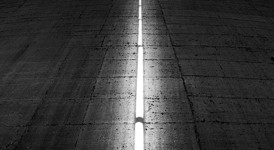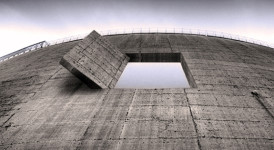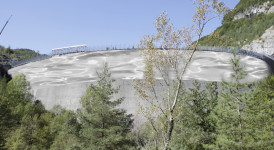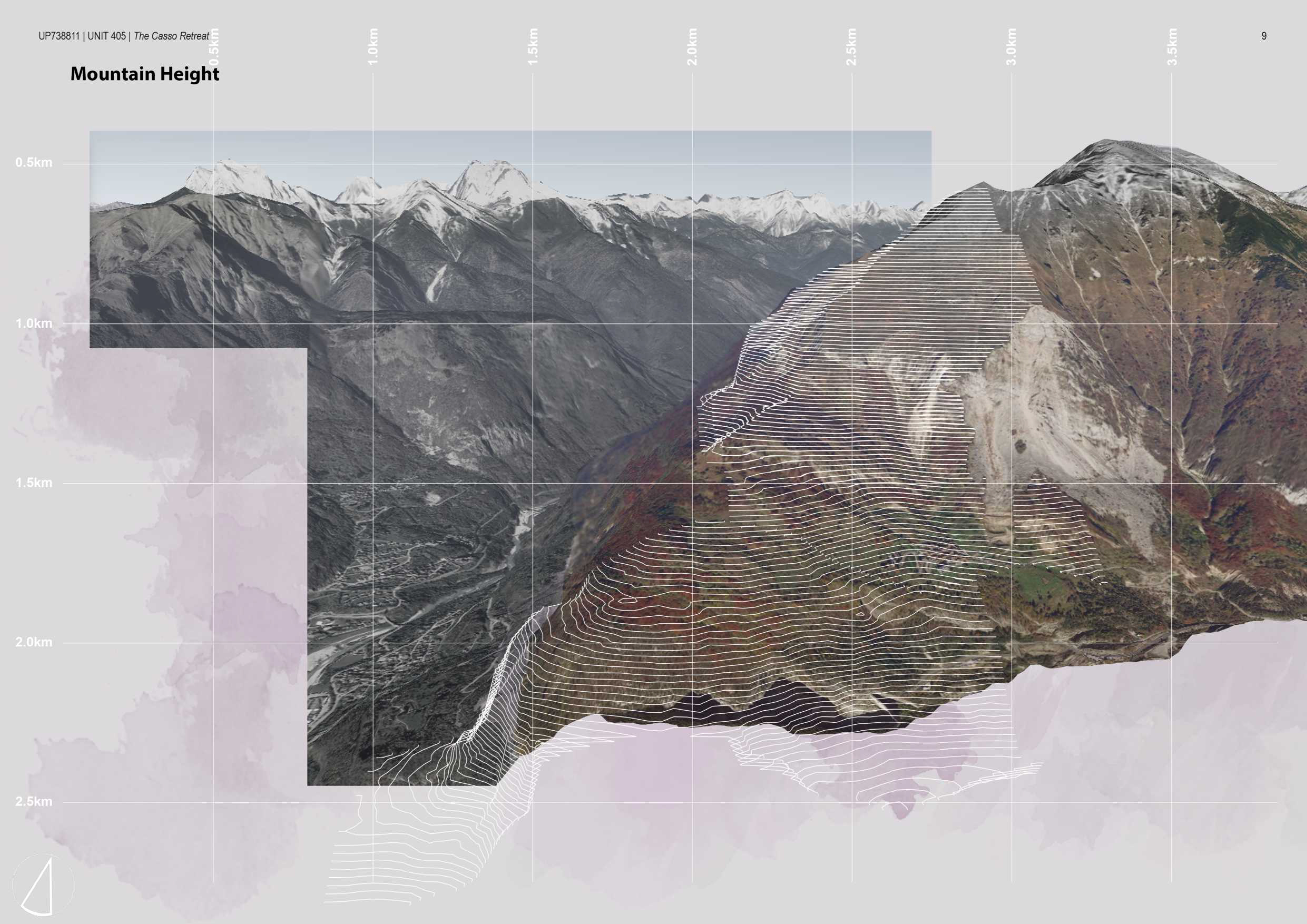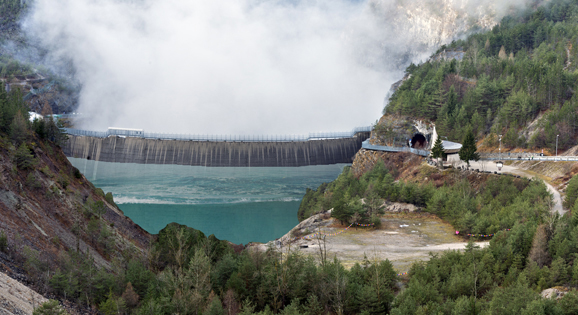
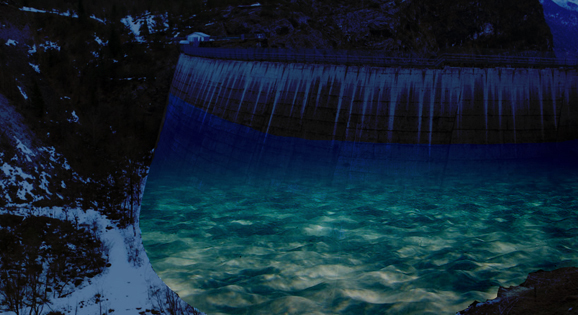
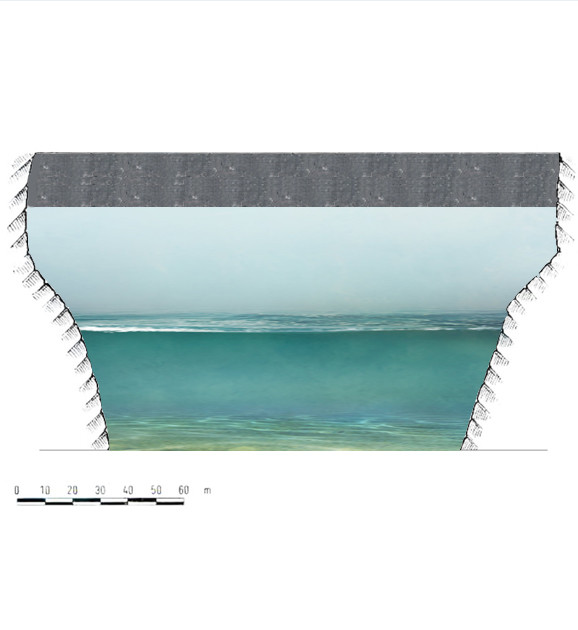
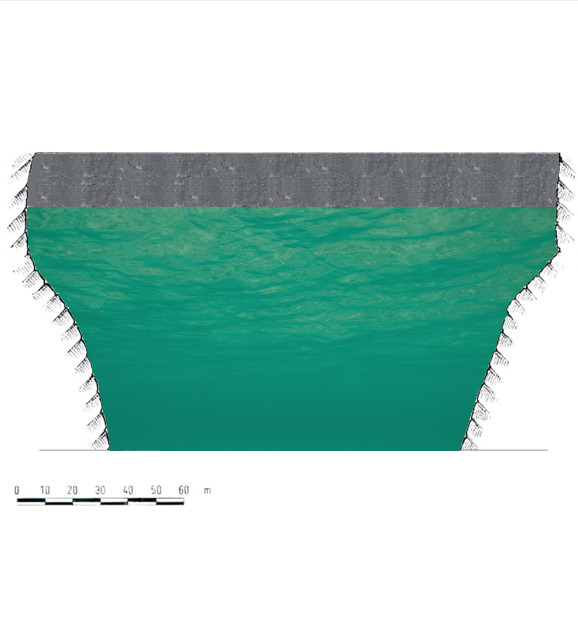
The Vajont dam, is the most powerful and pervasive image that distinguish this place. Once the purpose of holding the free water’s flow has ran out, the dam still keeps the same purpose in a symbolic way, by blocking the flow of the present time towards the future, anchoring this valley in its painful past without leaving space to other powerful and communicative images and symbols. The aim is to interrupt this function the dam carried out since more than 50 years.
A river’s flow is projected on the dam below the “line”; the 20 meters of concrete wall above are still clearly visible. The image is projected making use of digital projectors.
The river’s flow is a live stream from a camera floating on the water’s surface, and sent to the projectors. The camera is arranged down by the Piave River, downstream, to which the Vajont River is a tributary. Projecting the Piave’s image on the dam creates a virtuous circle of energy; the work then becomes a driving force of valley’s regeneration, carrying out a function that was formerly done by the turbines, fed by the dam.
Casting a river’s water flow below this “line” creates also a second image, the upper side of the dam becomes a bridge: a bridge is an element full of meanings, the most important of them is to connect what is separate. Here, in this place, the meanings are amplified, the bridge joins what is crumbling to what is sturdy, the inhabited part to the deserted one, past to present and, most importantly, by being a bridge of all and for all, it will erase the biggest distance, the one from native-visited and foreign-visitors. By annulling “us” and “you” a new collective is created.
The work uses water, cement, energy and light, the same elements that characterized the dam and its product, but subverting their functions and meanings.
Bridge over troubled waters doesn’t mean to suggest neither a dichotomy between technology as negative and art as positive, nor to wipe the tragedy’s memory off (the dam won’t be altered, it will remain intact and visible in its physical and symbolic monumental nature).
The work tries “to build”, for the whole valley, a new meaning through a simple idea, but rich in memory and in new purposes.
–
La diga del Vajont è l’immagine più potente e pervasiva che caratterizzi questo luogo. Terminata la sua funzione di ostacolare il libero fluire dell’acqua, la diga mantiene la medesima funzione a livello simbolico, bloccando il fluire del tempo presente verso il futuro, e ancorando questa valle nel suo doloroso passato, senza lasciare spazio ad altre immagini e simboli, altrettanto potenti e comunicativi. L’intento dell’opera proposta è proprio quello di interrompere questa funzione della diga che prosegue da oltre 50 anni.
Il moto delle acque di un fiume viene proiettato sulla diga al di sotto della “linea”; gli ultimi 20 metri di cemento rimangono ben visibili. L’immagine viene proiettata servendosi di proiettori digitali.
Il moto del fiume è ripreso in diretta grazie ad una telecamera galleggiante a pelo d’acqua che trasmette ai proiettori, la telecamera è posta lungo il fiume Piave che si trova più a valle e di cui il fiume Vajont è un affluente: proiettare l’immagine del Piave sulla diga crea un circolo virtuoso di energia; l’opera diventa così un motore di rigenerazione della valle, assolvendo ad una funzione che precedentemente era svolta dalle turbine alimentate dalla diga.
Proiettare l’acqua corrente di un fiume al di sotto della “linea” crea però anche una seconda immagine; la parte restante della diga diventa in tal modo un ponte: un ponte è un elemento carico di significati, il principale è unire ciò che è separato. E qui, in questo luogo, i significati si amplificano, il ponte unisce ciò che è franante a ciò che è solido, la parte abitata a quella deserta, il passato al presente, e soprattutto, essendo un ponte di tutti e per tutti, annulla la distanza più grande, quella tra locali-visitati ed estranei-visitatori. Con l’annullamento del noi e del voi si crea una nuova collettività.
L’opera utilizza acqua, cemento, energia e luce, gli stessi elementi che caratterizzavano la diga ed il suo prodotto, sovvertendone però significati e funzioni.
Bridge over troubled waters però non vuole suggerire una dicotomia tra tecnologia negativa ed arte positiva, né cancellare la memoria della tragedia (la diga non viene alterata, rimane integra e visibile nella sua monumentalitá fisica e simbolica).
L’opera cerca di “costruire”, per tutta questa valle, un nuovo senso tramite un immaginario semplice, ma comunque carico di memorie e nuovi propositi.

 milano
milano
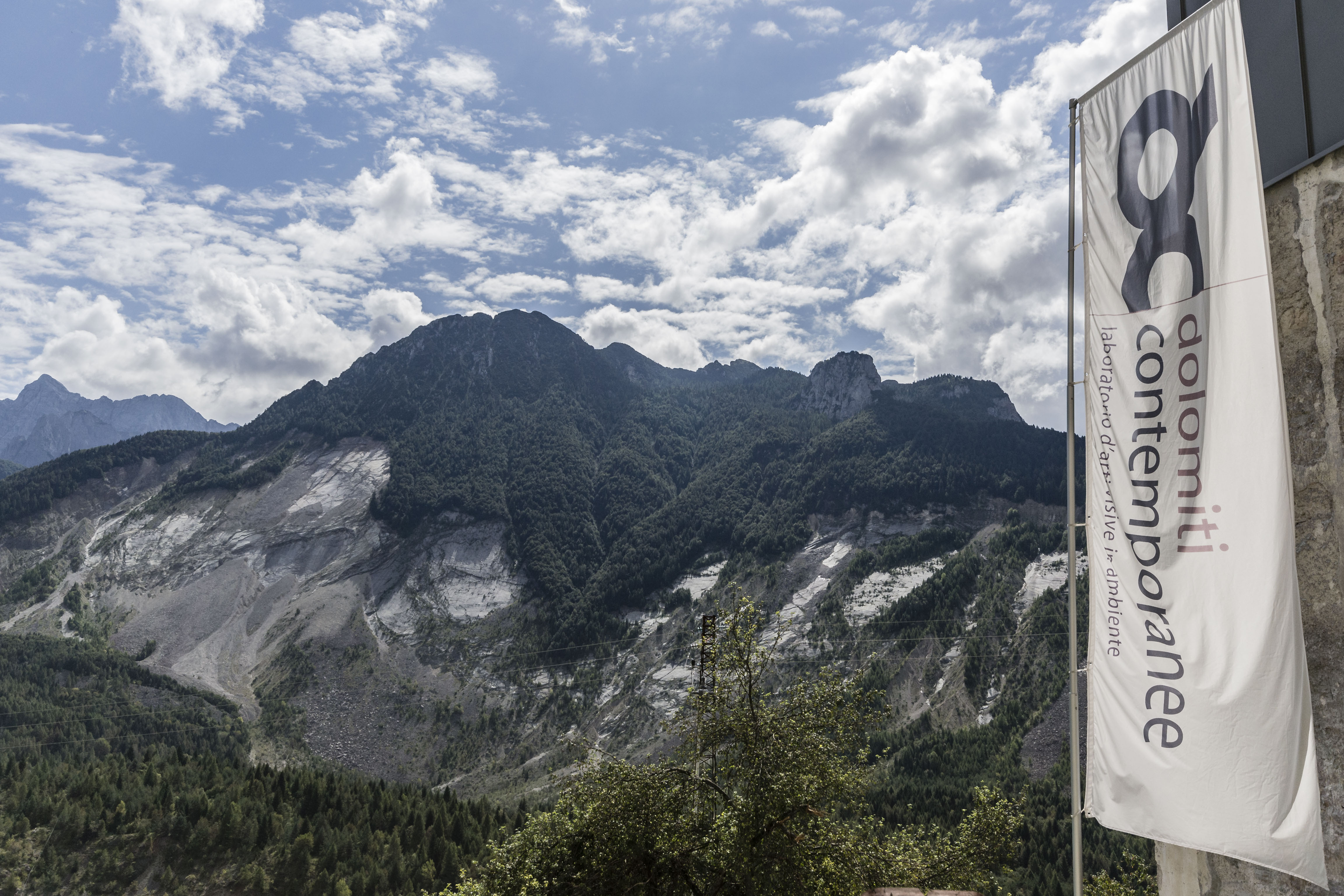
Tuesday, June 15th 2021, 2 – 4 PM, webinar panel:
two calls for vajont: fase _restart.
Vajont: [...]





